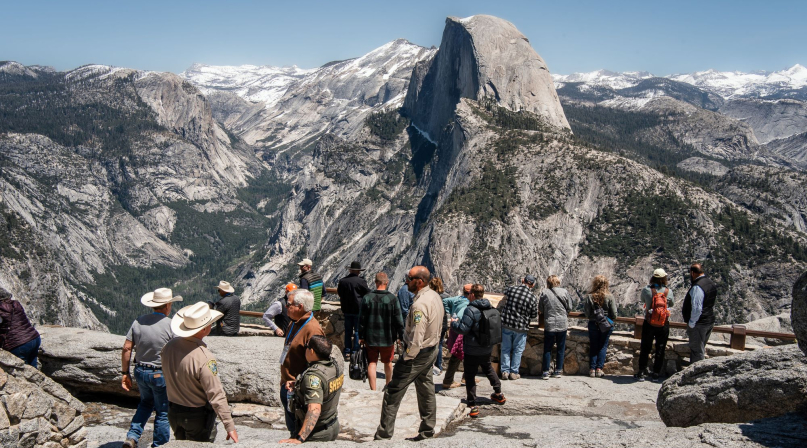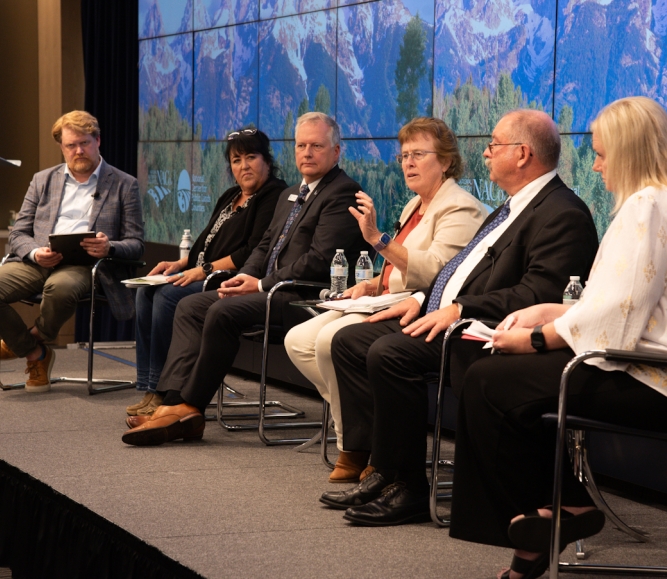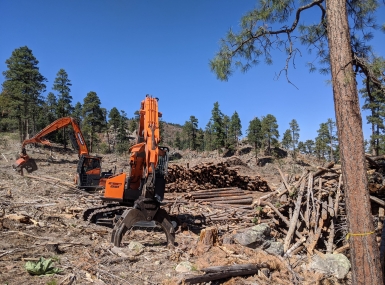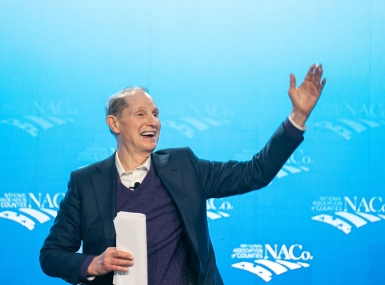Author

Charlie Ban
Upcoming Events
Related News

Key Takeaways
A recent renewed interest in visiting national parks has left the experience for many feeling like a visit to an amusement park, as visitors crowd trails, parking lots and roads to points of interest.
But while the National Park Service tests potential crowd management strategies, nearby counties are concerned for what prescribed drops in visitation will do to their hospitality-based economies and are asking for more refined approaches.
A reservation system that was tested between July and mid-October in California’s Yosemite National Park led to a drop in lodging revenue of between 15%-25% in the gateway counties surrounding the park — Mariposa, Madera, Tuolumne and Mono counties — according to their chambers of commerce. The park had used a temporary reservation system in 2020 and 2021 in response to the COVID pandemic and in 2022 during infrastructure repairs.
“I would sum it up to say that they feel the gateway communities feel like their comments aren’t really being recognized or considered,” said Mariposa County Supervisor Miles Menetrey. “Tourism is really our only industry, and it ebbs and flows based on the access to the park.”
Several constituencies take umbrage at the system. International travelers, who make their travel plans well in advance, have arrived and been unable to enter the park. They also often rent recreational vehicles with the intent of visiting several national parks in the West and rely on roads spanning Yosemite to reach them. Without a reservation, however, they are forced onto more treacherous routes around the park.
“Even if visitors aren’t staying in Mariposa or any of the gateway counties for a week, just people using the parks to transit the Sierra Mountains supports our economy, and when you need a reservation to drive on a road, that makes it tough for us,” Menetrey said.
He added that adding more bus routes could help keep visitation up while reducing vehicle traffic, which is often the culprit identified in overcrowding.
“The parking lots are packed and while they’re doing work on the roads in the park, people are waiting 45 minutes to get by,” he said. “Then, when you find a parking lot full, people just drive around looking for a way to see the park, but that spreads the congestion out.”
Overcrowding has been an issue for years, and Michael T. Reynolds, regional director for interior NPS regions 6, 7 and 8 touched on the issue in 2021 while addressing the Senate Energy and Natural Resources Subcommittee on National Parks.
“The National Park Service is committed to collaborating with local communities, businesses and nonprofit partners to find solutions that improve the quality and diversity of visitor experiences, address crowding and congestion in a thoughtful way, and maintain the tremendous range of benefits that national parks provide,” he said. “Given the iconic and finite nature of these highly valued places, along with the complexity of providing inclusive and high-quality visitor opportunities, creativity, active collaboration and shared responsibility will be essential for building sustainable and effective strategies.”
In Southern Utah, all likelihood indicates a timed entry reservation system for all of Zion National Park, the third-most visited national park in 2023, which saw a peak of 5 million visitors in 2021, double the amount from 2010.
“That’s catastrophic for us [as a region and state],” said Adam Snow, a commissioner in Washington County, home to Zion. “I don’t think that they only have one tool in the toolbox, but sometimes they kind of feel like they only have one tool in the toolbox. But they already manage backcountry camping with permits, so they could do permits for some of the most popular hikes.
“We can solve individual issues using a scalpel instead of a saw.”
Washington County had supported hiking permits for Angel’s Landing, a rigorous and hazardous hike that represented a safety and wellness threat in the event of overcrowding.
“We had so many people trying to get past each other, 1,500 feet off the edge of a cliff with just some chains to keep them from falling,” Snow said. “That was appropriate.”
Snow pointed to an NPS study that found that 13% of hikers on a riverbed trail, the Narrows, left because they thought it was too crowded.
“That means 87% of the people didn’t,” he said. “It’s just a difference of interpretation of how to help manage this resource on some of the things.”
Snow said that with a diversified economy that includes the city of St. George, Washington County could withstand the estimated 20%-35% reduction in visitors that the reservation system has been estimated to affect, but he worries about the consequences for nearby counties who are more reliant on visitors.
“It destroys Garfield County and Kane County because there’s nothing else to go there for,” Snow said. “If they don’t go to Zion, they won’t go to Bryce Canyon. The next 10 economic drivers in those counties doesn’t equal the kind of business that Ruby’s Inn does serving the tourist community.”
Jeff Bradybaugh, Zion’s superintendent, touted reservation systems in December 2022 to the House Committee on Natural Resources Subcommittee on Oversight and Investigations, emphasizing the need for transportation innovation to combat overcrowding.
“The National Park Service strategically supports the use of ride-hailing applications, and micro-mobility options such as scooters, e-bikes and bike-share where appropriate,” he said.
Bradybaugh cited successes in reservation system pilot programs at Glacier National Park in Montana and Acadia National Park in Maine during his testimony, along with Yosemite’s COVID-motivated temporary reservation system in 2020 and 2021.
“The National Park Service is committed to collaborating with local communities, businesses and nonprofit partners to find solutions that improve the quality and diversity of visitor experiences, address crowding and congestion in a thoughtful way, and maintaining the tremendous range of benefits that national parks provide,” he said.
Snow said there may be some opportunity for NPS to reevaluate options in light of the new administration and Congress but would prefer that public lands issues not be subject to a partisan tug of war.
“We want to solve this fairly, not just exploit a temporary advantage thanks to politics,” he said.
County News
Public lands county leaders show vision, experience
Following a busy day of Capitol Hill meetings, county public lands officials shared their insight on shared stewardship, the nature of public lands county economies and the direction the National Center for Public Lands Counties will take.

Related News

Counties search for footing amid federal workforce cuts
Staffing reductions in the federal land management agencies are upsetting the intergovernmental balance in public lands counties.
